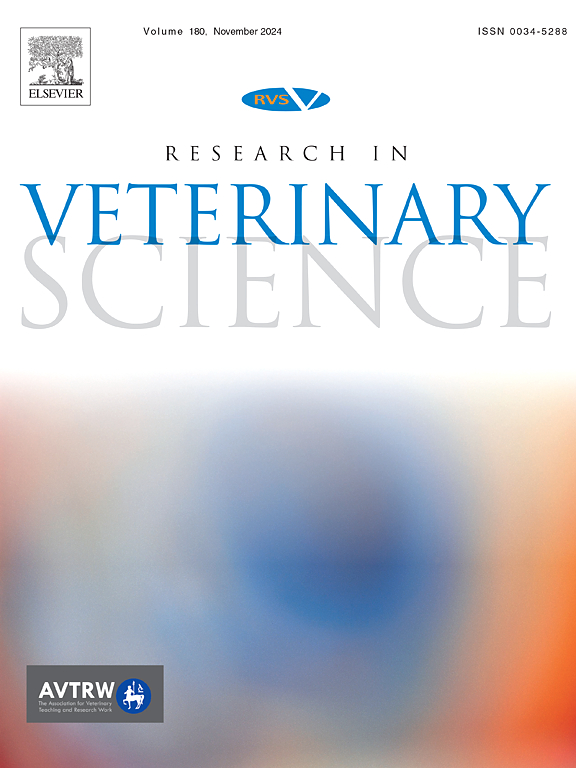猪皮肤伤口颅尾解剖位置真皮层厚度的差异:对伤口愈合研究的影响
IF 2.2
3区 农林科学
Q1 VETERINARY SCIENCES
引用次数: 0
摘要
本文章由计算机程序翻译,如有差异,请以英文原文为准。
Differences in thickness of dermal layers in cranio-caudal anatomic locations in porcine skin wounds: Implications for wound healing studies
The use of the domesticated swine is important for advancing our understanding of healing in human skin due to the architectural similarities in their skin. In swine wound studies, skin thickness may play a role in healing due to the anatomical variation in the thickness of the different skin compartments, such as the dermis and subcutaneous fat, as well as the differences in anatomical location of the wounds. Here, the thickness of different skin compartments were measured in excisional wounds created in different anatomical locations along the cranio-caudal axis. Full-thickness, 2 cm diameter circular excisions were created on the dorsal paravertebral area of pigs. Thickness of the dermal and adipose layers of excised tissues at day 3 post-excision were measured in fixed H&E sections. Wound re-epithelialization was measured on excised day 10 wounds. A significant difference in skin thickness between the cranial wounds compared to the caudal wounds is noted in skin excised down to the landmark of the subcutaneous fascial plane. There were also significant differences in the thickness of the dermal and fat layers. Skin thickness, and the variations of the dermal and fat compartments, and locations of wounds should be taken into consideration in porcine wound studies as they may contribute to alterations in healing in the different locations.
求助全文
通过发布文献求助,成功后即可免费获取论文全文。
去求助
来源期刊

Research in veterinary science
农林科学-兽医学
CiteScore
4.40
自引率
4.20%
发文量
312
审稿时长
75 days
期刊介绍:
Research in Veterinary Science is an International multi-disciplinary journal publishing original articles, reviews and short communications of a high scientific and ethical standard in all aspects of veterinary and biomedical research.
The primary aim of the journal is to inform veterinary and biomedical scientists of significant advances in veterinary and related research through prompt publication and dissemination. Secondly, the journal aims to provide a general multi-disciplinary forum for discussion and debate of news and issues concerning veterinary science. Thirdly, to promote the dissemination of knowledge to a broader range of professions, globally.
High quality papers on all species of animals are considered, particularly those considered to be of high scientific importance and originality, and with interdisciplinary interest. The journal encourages papers providing results that have clear implications for understanding disease pathogenesis and for the development of control measures or treatments, as well as those dealing with a comparative biomedical approach, which represents a substantial improvement to animal and human health.
Studies without a robust scientific hypothesis or that are preliminary, or of weak originality, as well as negative results, are not appropriate for the journal. Furthermore, observational approaches, case studies or field reports lacking an advancement in general knowledge do not fall within the scope of the journal.
 求助内容:
求助内容: 应助结果提醒方式:
应助结果提醒方式:


